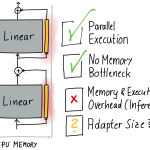The datetime bundle allows you to create date and datetime objects simply from scratch that can be utilized, for instance, as thresholds for filtering (strive printing the created objects under and their sorts to raised perceive their format).
Additionally, datetime allows you to create date and time objects that check with as we speak or now.
Watch out right here, as datetime objects are often “timezone naive” and don’t check with a particular time zone, which can get you into hassle when working with worldwide colleagues!
With the assistance of the zoneinfo module (built-in since Python model 3.9), you may set the timezone with the tz parameter of astimezone().
You would possibly end up in a scenario the place you need to show your datetime object as a string or convert a string right into a datetime object. Right here, the features strftime() and strptime() are useful.
Changing a datetime object (or elements of it) to a string
Generally used format codes for describing datetime objects may be discovered here.
Changing a string right into a datetime object
Parsing advanced strings utilizing dateutil
If you’re dealing with massive datasets, numpy’s datetime64 could turn out to be useful as, attributable to its design, it may be a lot quicker than working with datetime and dateutil objects. The datetime64 information kind in numpy encodes dates and occasions as 64-bit integers.
This shops dates and occasions compactly and permits vectorized operations (repeated operations utilized to every aspect of a numpy array).
As you may see when working the code above, with a datetime or dateutil object, vectorized operations will provide you with an error.
Pandas could be a sensible choice when engaged on a time collection information venture.
The well-known data-wrangling library pandas combines the comfort of datetime and dateutil with the efficient storing and manipulation risk from numpy.
Create a pandas dataframe (from CSV) parsing a date column
Now, we now have a primary understanding of dealing with dates and occasions in Python utilizing numpy and pandas. Nonetheless, typically, we don’t create dates and occasions ourselves, however they’re already a part of the dataset we’re coping with. Let’s create a pandas information body with a date column (Kaggle dataset NFL).
As you may see, when loading from a CSV, the column that holds a date is became a string format if not specified anyplace exactly. To obtain the date format, you possibly can create an additional column referred to as “gameDate_dateformat” or immediately move the date column by means of the parameter parse_dates in pd.read_csv().
One other helpful manipulation when working with time collection information is to have the ability to filter by date/time or subsetting a knowledge body utilizing date/time. There are two strategies to do that: filtering/subsetting or indexing.
Filtering pandas information frames by time
Make it possible for the edge date you utilize for subsetting has the identical format because the column!
If the column you need to filter by has the format datetime (like within the instance), the comparability date can’t be a date however must have a datetime format!
Indexing pandas information frames by time
Much more highly effective is indexing a pandas information body by date or time.
Indexing may be particularly helpful when working with time collection, as there are strategies like rolling home windows and time-shifting.
Typically, we’re not within the date itself however possibly the period, the weekday, or simply part of the datetime, e.g. the 12 months. For this, datetime but in addition pandas present some helpful manipulations.
Timedelta
With pandas, you may calculate, for instance, the distinction between two datetimes. For this, we’ll have a look at a special dataset of Uber journeys (Kaggle dataset Uber) with a begin and an finish timestamp. Some preprocessing is required (delete the Complete Row) to begin wanting into timedelta.
Extract the weekday or the month
This works barely otherwise for the only datetime versus the pandas Sequence. Whereas the weekday or the month of the only datetime object may be immediately accessed by including an attribute (e.g., .month) or methodology (e.g., weekday()), the pandas Sequence all the time wants the .dt accessor.
The dt. accessor permits you to entry datetime-specific attributes and strategies from a datetime Sequence.
Create a date/time lag
One other useful manipulation for time collection information might be so as to add an additional column that provides a lag of a date or datetime.
To work with date or time objects in Python, realizing the fundamentals of the built-in bundle datetime (e.g. date() or strftime() and strptime()) are helpful. Zoneinfo is a brand new built-in bundle (since model 3.9) which is extra handy than third-party modules when working with completely different time zones. Dateutil is a beneficial library for extra superior date and time manipulations when working with single date objects, e.g., parsing advanced strings. When working with dates and occasions in information frames, Sequence, or arrays, pandas combines the advantages of datetime, dateutil, and numpy and serves as a handy library.


